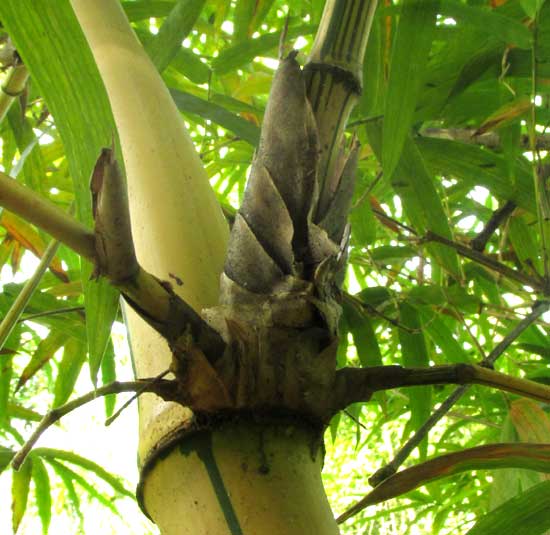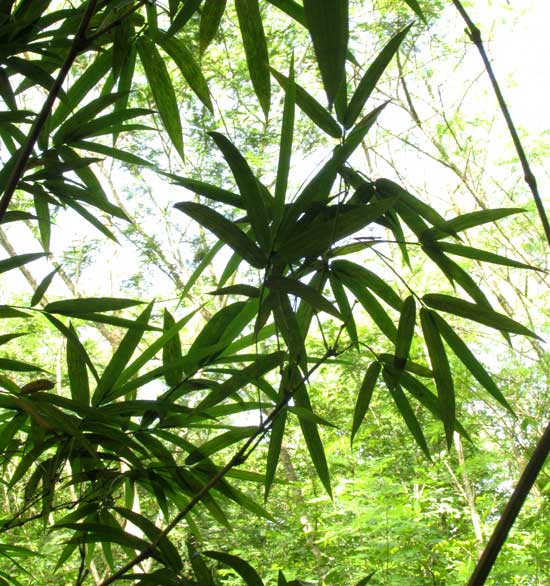Excerpts from Jim Conrad's
Naturalist Newsletter
from the September 3, 2017 Newsletter issued from Rancho Regenesis in the woods ±4kms west of Ek Balam Ruins; elevation ~40m (~130 ft), N20.876°, W88.170°; north-central Yucatán, MÉXICO
YELLOW GROOVE BAMBOO
In the big sinkhole where the owner is planting exotic trees there's a small cluster of bamboo species reaching about 20ft high (6m) and whose stems, or culms, are attractive enough, as shown below:

My hand holding a culm so that the stems' diameters can better be judged is shown below:

This pretty little clump suffers from habitually being overshadowed by the towering Male Bamboo we profiled last week. With more light and water, maybe it would be larger.
In the above picture you can see the most striking and distinctive feature of this bamboo: Its culms are lemon yellow with green stripes. That's already enough for us to identify it, but just for the fun of it I photographed a technical feature that helps designate the genus, and that's how the branches arise from the culms' nodes -- in this case, a main one with two or three much smaller side branches -- shown below:

The species' leaves are shown below:

These are shade leaves not much larger than a finger, but up higher where sunlight is available they were much larger, the size of butcher knife blades.
This is Yellow Groove Bamboo, PHYLLOSTACHYS AUREOSULCATA 'SPECTABILIS'. The "spectabilis" at the name's end indicates a horticultural form of the species known as Phyllostachys aureosulcata. You can see that this spectabilis form is yellow with green stripes on the culms' sections, or internodes. The form aureocaulis has all-yellow culms, the form alata is totally green, plus there are other forms as well, for this is a much loved, much propagated bamboo. Mainly it's popular because it's so attractive, but also because its young shoots are edible, even raw. However, in some environments it's an aggressive spreader and in some places is prohibited as an invasive species.
Originally the species was from China but now it's planted throughout the world's warmer areas -- even in the Temperate Zone. I read that "In areas where the average winter minimum temperature is above -15°C (5°F), it may grow to a maximum height of 14 meters (46 feet)... "